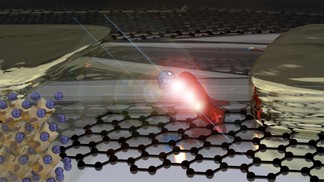Scientists at École Polytechnique Fédérale de Lausanne (EPFL) have developed the first perovskite nanowire-graphene hybrid phototransistors. The key feature of this innovation is that even at room temperature, these phototransistors are very sensitive to light, thereby making them excellent photodetectors.
 The hybrid photodetector © Endre Horvath/EPFL
The hybrid photodetector © Endre Horvath/EPFL
Perovskite materials contain lead and are capable of converting light into electricity efficiently, thus transforming solar cell technologies. Graphene is well known for its superior strength and exceptional electrical conductivity. By combining these two materials, the scientists built these hybrid phototransistors.
Endre Horváth headed the research team working at the lab of László Forró at EPFL. Here, they combined their microengineering skills to construct nanowires from perovskite methylammonium lead iodide. In 2014, Horváth developed a highly non-trivial method known as slip-coating method to produce nanowires.
The key benefit of working with nanowires is their consistency. During manufacture, they can be controlled to transform their architecture and discover different designs.
Since the device was created by placing the perovskite nanowires on graphene, the efficiency of light conversion to electricity at room temperature significantly increased.
“Such a device shows almost 750,000 times higher photoresponse compared to detectors made only with perovskite nanowires,” added Massimo Spina who fabricated the miniature photodetectors.
Going forward, these graphene/perovskite nanowire hybrid devices may be considered as an option for even single-photon detection due to their excellent sensitivity.
The EPFL research has been published in Small.